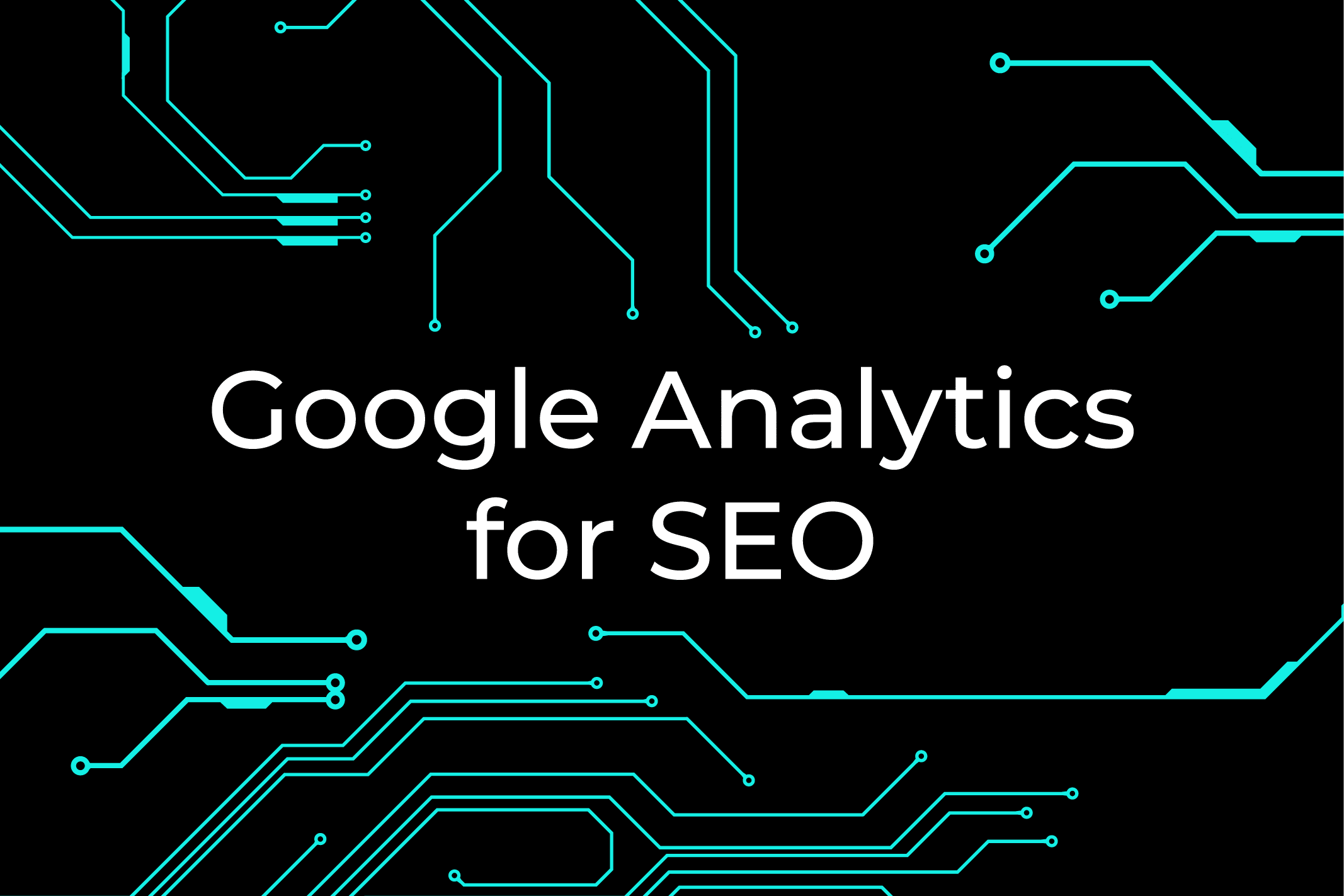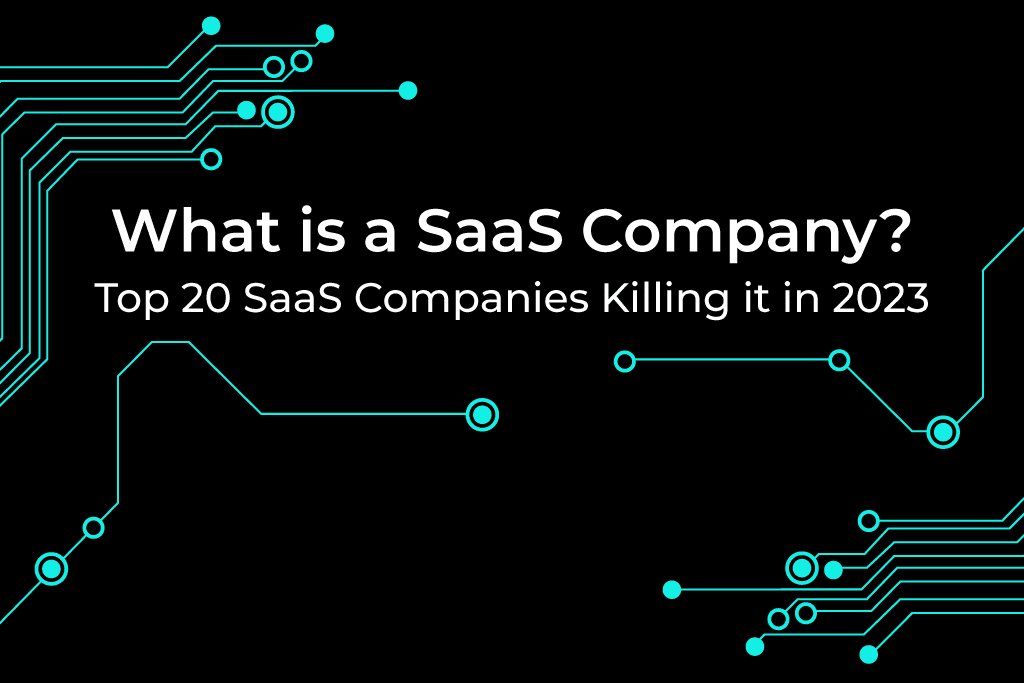What is Enterprise SEO? Costs, Benefits, Strategies & Case Study
What is Enterprise SEO?
To answer that, let’s start by asking something a bit simpler: what is SEO? SEO stands for search engine optimization, and it’s the process of improving a website in order to catch the attention of search engines. Many SEO practices focus on Google in particular, but it can be applied to any search engine as long as you have an idea of how it works.
Enterprise SEO is a large-scale version of this process, encompassing many optimization strategies. It’s somewhat different from SEO for small businesses, as it targets a different market and (usually) involves a much larger and more complex website.
What makes an enterprise level website?
Of course, what exactly counts as ‘enterprise level’ can be tricky here. Normally, we might define it based on the number of employees. However, some large companies with thousands of employees may only have an incredibly simple website. Equally, a small ecommerce business with a dedicated following in a particular niche might have thousands of pages.
Regardless of which fulfils your definition of enterprise, they’ll have some things in common. In particular, a desire to have an impactful and high-ranking website. This website will feed into the brand’s reputation, as well as being the first point of contact for many potential consumers.
Whether it’s a huge website, a huge company, or both, there will be a lot of optimization involved to keep it relevant. This requires a high level of collaboration, automation, and dedicated management – which is where enterprise level SEO strategies come into play.
Book a Consultation
What is SEO in 2023?
SEO is, and always has been, an ever-evolving field. Google is notoriously secretive about its algorithm, and since it has the largest search volume worldwide, many practices have sprung up in an attempt to win its favor.
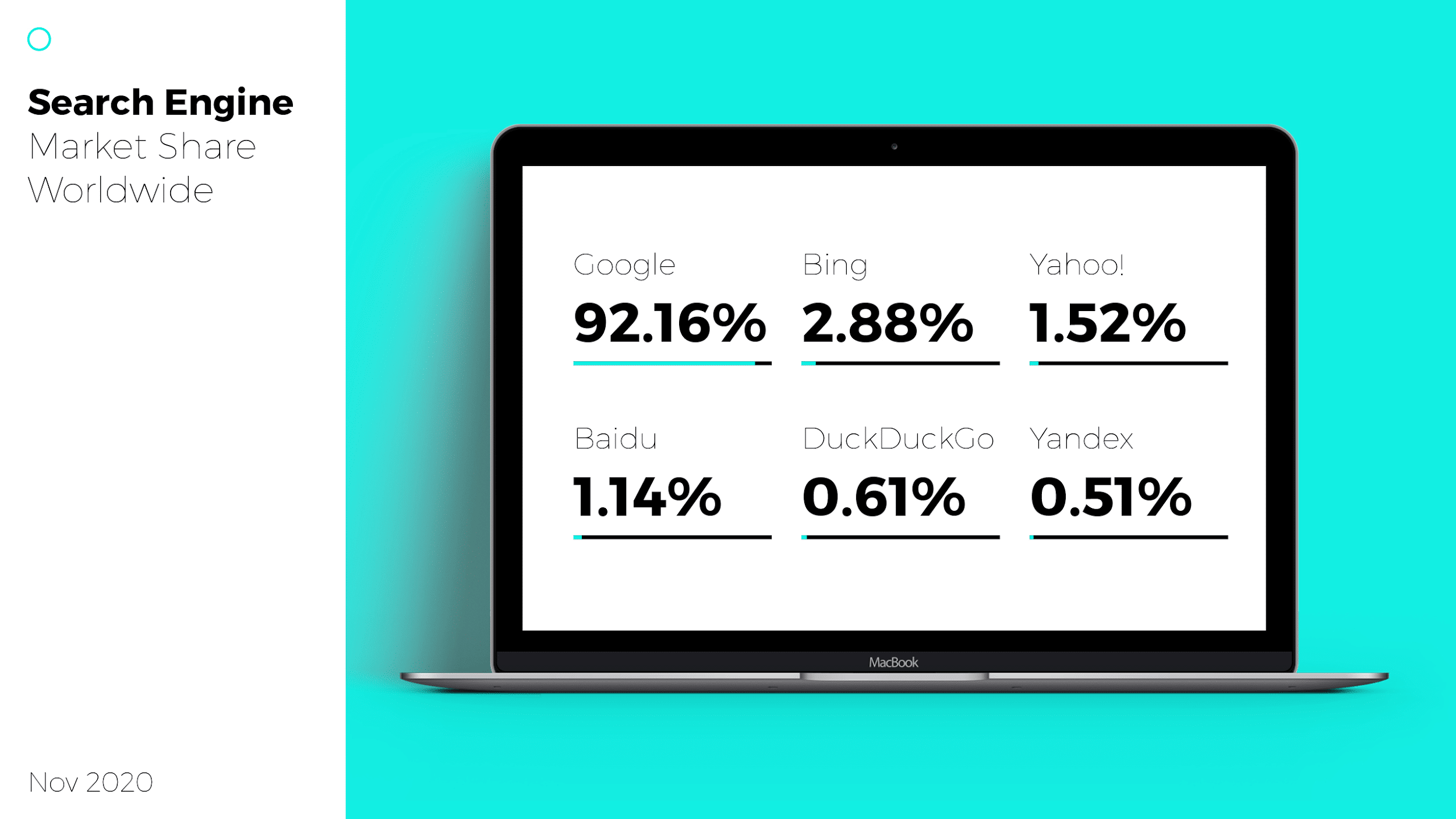
There are many outdated practices that you may still see listed as advice. However, these practices can lead to being penalized – the exact opposite of what you want. Some of these outdated practices include:
- Keyword stuffing. This dates back to the idea that keyword density was the most important thing, regardless of quality. Some sites even used to add the keywords in the same color as the background! This has fallen out of favor, and you’re likely to be penalized for it now.
- Rewriting duplicate content. While a complete rewrite of content you’ve used elsewhere should be fine, paraphrasing it isn’t. The closer it is to the original copy, the more likely it is to be filtered out.
- Spamming comments. If you’ve ever hosted a blog, you’ll be familiar with this. Many less scrupulous sites post endless, unrelated comments linking back to their site wherever they can. The key word here is unrelated – adding a link to a conversation where it might help is fine, spamming it under every blog you see is not.
- Focusing on text search. While text search remains important, it’s no longer the only search method. Voice search, and image search are equally important, and content needs to be optimized for all three.
Instead, current SEO practices focus far more on the quality of the content, customer intent and ‘E-A-T’. What’s E-A-T? We’ll get to that shortly. Some key trends for SEO in 2021 include:
E-A-T: expertise, authoritativeness, and trustworthiness
While targeting keywords and creating quality content remains important, there’s something else to consider: the expertise, authority and trustworthiness of your enterprise. These aspects weigh heavily into Google’s algorithm.
It’s no longer enough to treat SEO as a single, distinct process – instead, you need to consider all aspects of your presence. Factors like customer service and user experience are important here, as building a positive reputation increases your trustworthiness. Standing out as a thought leader in your field can help with the expertise and authority you need, as well.
Create good content
Building the three factors of E-A-T involves content creation. Great content should be:
- Readable – consider your target audience and their average reading level.
- Valuable – it should provide value to the audience. This could be through providing new information, insights, or simply enjoyment.
- Relevant – you wouldn’t want to start reading this article about SEO, only for it to start talking about exercise routines half way through, would you?
- Original and brand-relevant – your content should feel like your content, not just something you could have found anywhere.
- High-quality – technically speaking, written content should have excellent grammar and spelling, while images and videos should be hi-res.
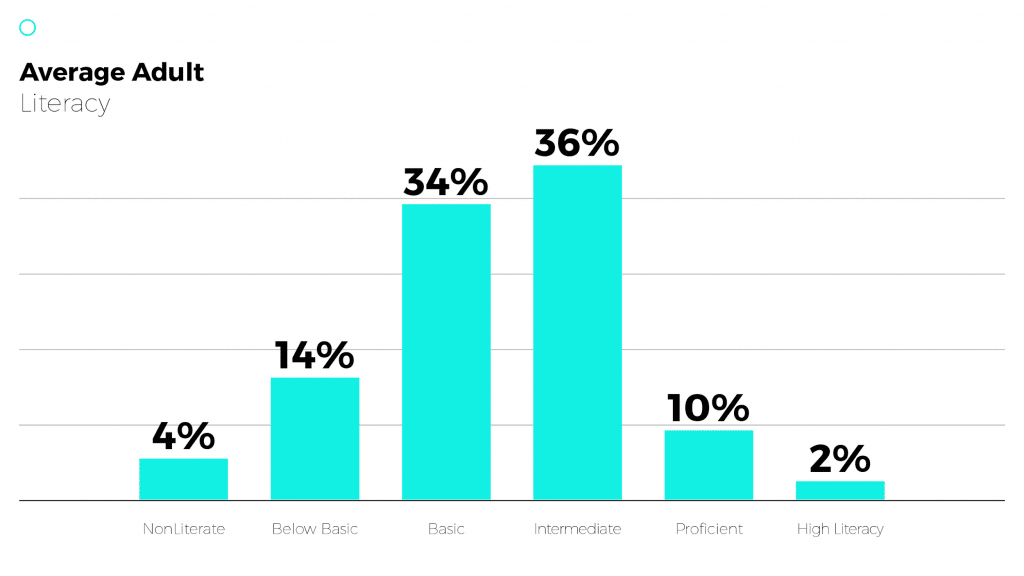
Consider user intent
This relates somewhat to creating good content, but it’s worth noting itself. As search engine technology develops, user intent becomes more important than user input. Google has begun to make use of natural language processing (NLP) through BERT (Bidirectional Encoder Representations from Transformers). This helps it to understand the context of searches, rather than just the individual words.
This means that, instead of having to target strangely phrased long-tail keywords, you can focus more on content relating to topics and assume that Google will direct users accordingly.
Optimize your website
It’s not enough to have interesting, relevant content with appropriate keywords. Your website also needs to be technically up-to-date. Websites with a low page speed are treated as lower quality. Equally, a poorly optimized website will likely have a lower dwell time. While the relevant of dwell time to search engine rankings is still debated, you generally want to encourage a longer dwell time to encourage conversions.
Other Kinds of SEO
Whilst we’re focusing on enterprise SEO, it’s worth being aware of other types of SEO. These aren’t often as distinct from each other as they may appear – a strong enterprise SEO strategy will likely leverage many of them.
What is international SEO?
International SEO is vital if you are in, or planning on entering, the global marketplace. It should involve a worldwide customer and competitor analysis, as well as assessing how you’re currently doing on alternative search engines like Yandex, Bing, or Baidu. Different countries are likely to have different marketing channels and social media platforms as well.
Search engines tend to show results based on the searcher’s location, and that means if you’ve previously optimized your content for one country – say, the UK – you may struggle to get a foothold in another. International SEO can counteract this, building up your presence in other locations. It can also ensure you create content relevant to that new location’s audience, rather than relying on pre-existing content.
What is localized SEO?
Localized SEO is the opposite of international SEO, though it can involve similar techniques. In this case, you’re trying to build your presence in a certain location – think city, rather than country.
Some aspects of local SEO include:
- Using outreach strategies to build links to other local businesses and websites.
- Optimizing your Google My Business information
- Highlighting location-specific information like your address or local services
- Creating dedicated web pages for each location you have
What is technical SEO?
Technical SEO involves making sure your website meets search engine’s technical requirements. It’s here where things like load times become relevant. Enterprise websites often have a lot of content, so make sure your website is quick to load, easy to navigate and well-indexed.
There are other aspects of technical SEO that an enterprise SEO company can help with. Google (and other search engines) have particular guidelines, and it’s often worth doing a full SEO audit to ensure that you’re meeting them. They include:
- Being designed for users, not search engines
- Having a clear structure
- Using 301 redirects when removing old pages
- Assessing your use of robots.txt
What is mobile SEO?
Around half of all website traffic comes from mobile devices. This means you must optimize your site for mobile, or any other SEO efforts you put in are in vain.
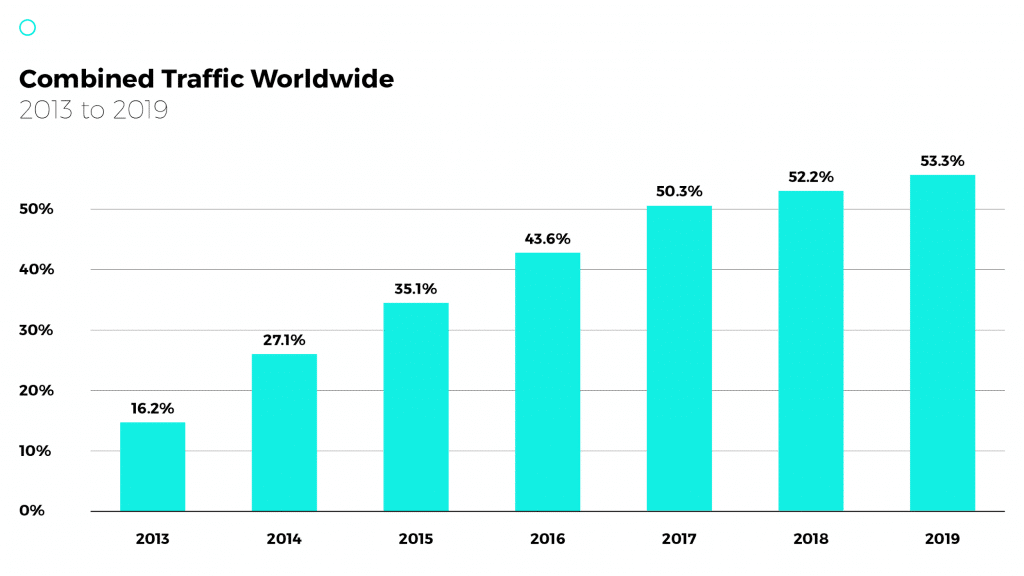
A lot of mobile SEO links in to technical SEO, but with mobile device specific considerations. Luckily, Google has made it clear what they expect. You also need to consider whether your content works on mobile as well as it does on desktop or laptop devices – do images load far too large and slowly? Perhaps videos are in the wrong aspect ratio, or your font size is too big or small.
Undertaking a specific review of your mobile SEO is a great way to get ahead of your competitors, and will only continue growing in importance.
Is Enterprise SEO Necessary?
With all of this in mind, you might be asking yourself if Enterprise SEO is really necessary. In short: yes!
Much as we like to think that the best content will naturally rise to the top, it’s simply not the case. Less than 1% of searchers click through to a website from the second page of results.
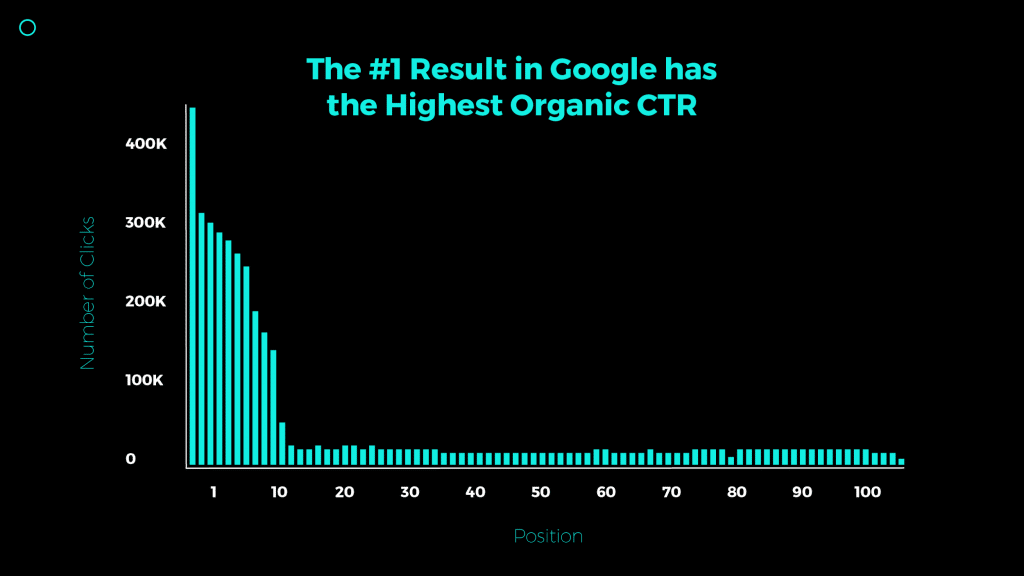
If you’re not on that first page, you’re at risk. Your competitors are almost certainly employing an enterprise SEO strategy, so if you want to compete, you need to as well.
Does SEO still work?
You might wonder if, despite these changes, it still works and whether you should buy-in to an SEO campaign at all. Perhaps you’ve tried it, and haven’t seen an impact. One of the problems is the ever-changing nature of it that was mentioned earlier – older techniques no longer work, but that doesn’t mean the concept of SEO doesn’t.
Many people say it no longer works simply because they misunderstand what the most up-to-date processes are, or they have an underlying issue. For instance, if they’ve focused on creating excellent, keyword focused content, but have major technical issues on their site, they won’t see the impact they were hoping for.
As long as you stay up to date on current practices, and avoid any outdated ones, it will help. You may run into difficulties if you’ve been penalized by search engines for what they deem ‘blackhat’ tactics (for instance, keyword stuffing or purchasing links). If that’s the case, hiring SEO experts to resolve this should be your first step. Once that’s out of the way, it’s time to focus on optimizing your content and improving your SEO.
Is SEO a dying industry?
SEO isn’t a dying industry, but it is a changing one. If you don’t keep up, it’s easy to fall behind. Consider these statistics:
- 39% of people who make a purchase were influenced by search results (Google)
- Between May and October 2020, Google was visited 88 billion times (SimilarWeb)
- 77% of people use Google more than three times a day (Moz)
- Around 93% of web traffic is directed through search engines (99Firms)
Most people interact with the internet through search engines, trusting the first page of results. If you’re not optimizing your content to be on that first page, you’ll see a very low rate of traffic. With the rise of voice and visual search, SEO looks set to remain a vital part of any marketing strategy.

How much does Enterprise SEO cost?
Of course, as with any marketing strategy, it’s important to understand the cost. Unlike pay-per-click advertising, it’s not quite as simple to work out.
When it comes to enterprise businesses, you’re unlikely to see many people charging an hourly or daily rate. Instead, expect to see a monthly retainer or per project fee. This allows for the extensive changes working on a large-scale website involved. It also means you can retain a company on an ongoing basis, keeping your website up to date and constantly improving.
With that in mind, what can you expect to pay?
A smaller company with a larger website might be able to make do with mid-range SEO, but almost all large organizations are going to need high-end SEO. It’s far better to invest in a top tier company that can perform accurate audits, fix technical and content based issues, and create a long term plan with clear KPIs (key performance indicators), than to try and fix it on the cheap with just a few keyword optimized blog posts.
Hiring internally will run you between $500,000 – $1,000,000 in salaries alone – that’s including an SEO Director/Strategist, 2-3 people for outreach/negotiation, 5-10 content writers, 1-2 editors and a digital PR expert. Of course, on top of that are recruitment and training costs, software licenses, and additional office space.
Hiring an external agency for SEO tends to start from around $150,000 a year – and you don’t need to worry about any of the recruitment and training yourself. They’ll already have the tools they need, and since they work offsite you don’t need to find extra space for them. It’s also easy to scale, which is ideal if you have a new product launch due, or a new website.
Is SEO worth the investment?
Before you buy in, you’ll want to know if it’s worth the cost. It can be tricky to gather an accurate ROI (return on investment) for search engine optimization, as it depends on what exactly you want out of it. Whilst a strong SEO strategy should lead to increased conversions, that’s not the only goal.
When it comes down to it, SEO is about improving visibility, and that doesn’t always directly correlate to income. After all, if you have the most visible website in the world but charge triple what your competitors do for the same product, you’ll still struggle to make sales.
As highlighted by accelerate agency’s guide on SaaS marketing budgets, investing in a well-crafted content marketing plan can significantly boost your website’s visibility and help establish your brand as an authority in your niche.
Generally, SEO ROI can be measured through its impact on:
- Sales
- Custom goal values (for instance, number of newsletter sign ups)
- Traffic
- SERP rankings
Later, we’ll take a look at a case study for RingCentral UK, and show some of the metrics that were measured.
PPC vs SEO
An alternative tactic to bringing in traffic is PPC advertising. However, 70% of marketers consider SEO to be the more effective method.

That’s not to say that PPC advertising doesn’t have its place, however. Generally speaking, PPC advertising has good short term results, but it won’t necessarily translate into longer term relevance. Implementing a strong SEO strategy allows you to grow steadily, building your relevance and visibility long term.
Additionally, PPC often brings in higher bounce rates, as people click through and leave. Organic searches tend to bring in potential customers for longer, and SEO is vital for boosting this organic traffic.
It’s worth noting that PPC advertising tends to have a more immediate impact on your bottom line, so if you’re looking for a quick boost in sales, it can be worthwhile. However, this immediate impact stops almost as soon as you stop paying for the advert. SEO, however, takes longer to build, but once it’s in place, it continues to pay off.
For many large enterprises taking their first steps into website optimization, it may be worth using both – implementing a strong SEO strategy, then boosting their audience through PPC advertising to start. However, SEO is definitely the more cost-effective choice.
Why Hire An Enterprise SEO Company?
You may be tempted to try and implement a strategy in-house, rather than hiring a third party. However, hiring an enterprise SEO agency can be much more effective than trying to handle it all yourself.
For a start, you get an outside pair of eyes to look over everything – free of history, emotional attachment or bias. This is particularly important when it comes to doing a content refresh, as they’ll be able to draw objective, unbiased conclusions about what to remove or update.
Enterprise SEO Services
An enterprise SEO company should offer a variety of services, designed to meet whatever needs you have. These services can include:
- Removing/reducing Google penalties
- Building new website SEO
- Creating new, keyword focused content
- Refreshing existing content
- Optimizing conversion rates
- Link building
- Training
- Keyword research
They may also offer related, but distinct, services such as assisting with Google Tag Manager, or optimizing your web development practices. Having a dedicated agency dealing with all of these aspects can be far more effective than attempting to spread out these tasks throughout your company, or creating and hiring a whole new department.
Not only will an SEO marketing agency have years of experience, they’ll also be focused entirely on the SEO strategy, rather than treating it as another additional task.
SEO Case Study: RingCentral
Accelerate worked with RingCentalUK on their SEO strategy, and successfully:
- Increased organic traffic by 1324% over six months
- Increased RingCentral’s sales pipeline by 4030% (from £42K to £1.9M) in around five months
- Increased total impressions of business critical keywords by 150% (from 75K to 188K) in one month
This work led to a nomination for the UK Search Awards 2020 in the category ‘Best use of search – B2B (SEO)’, and the DADI Awards in the category ‘Most Effective Use of Organic Search’. Additionally, it was so successful that we were asked to work on the American company’s sites as well.

To start with, Accelerate undertook a series of audits. We focused on technical SEO, competitive intelligence, onsite content and offsite links. It went beyond the RingCentral website itself, with a gap analysis showing competitors in the same field. After realizing the current enterprise SEO strategies weren’t working, Accelerate put a new plan in place.
This involved:
- Collaborations with authoritative, expert domains
- Creating 150,000+ words of guest post and ebook content
- Writing 50,000 words of keyword optimized, high-quality content for their blog
- Rewriting and optimizing many of the core landing pages
- Building substantial amounts of backlinks from trusted sites
Part of this enterprise SEO strategy involves preparing for the future, not just optimizing for the present. RingCentral’s updated website and content is robust and will be able to weather any changes that search engines may make to their algorithms.
Benefits of an Enterprise SEO Strategy
As you can see from the RingCentral case study, a great enterprise SEO strategy pays off. But what other benefits can it have?
1- Improve your customer reach
It doesn’t matter how good your product, your service, or your content is if nobody sees it. If you don’t show up on google search, no-one will be able to find you. The main benefit of implementing an enterprise SEO strategy is increased visibility and customer reach.
Ideally, you want to reach your audience, no matter where they are in the funnel. An enterprise-focused solution will ensure that you have appropriate content for every stage.
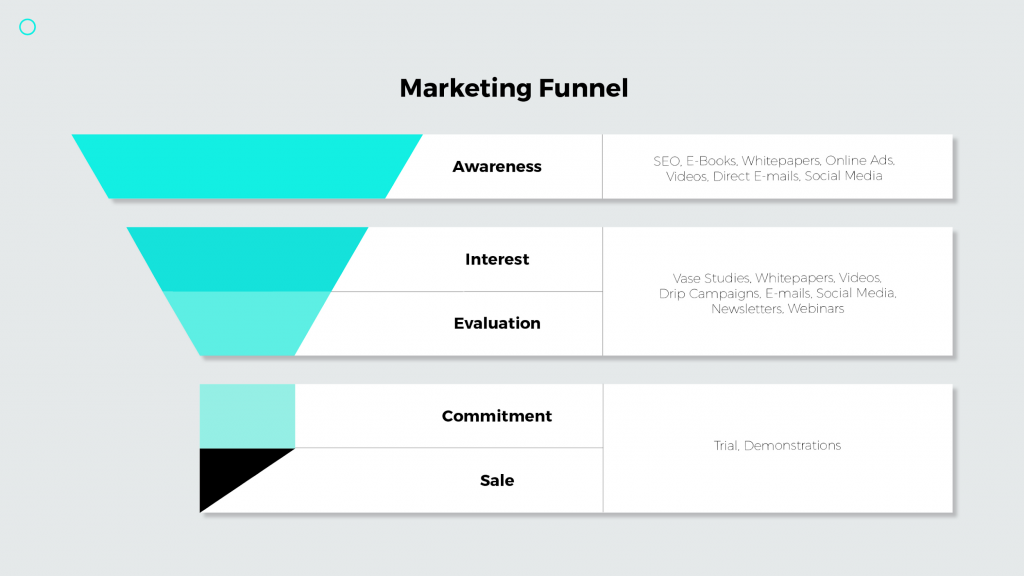
Depending on your field, the content you create for each stage will vary. After all, a company that sells phone systems will have a very different target audience to a makeup brand. Here are some examples of the kind of content you might create at each stage.
Awareness and discovery
This is where informational content is useful (more on that later!), as you start to tell potential customers about you. For a B2B technology brand, this might come in the form of whitepapers, infographics, or blog posts on industry trends. For a B2C fashion brand, it could be an email campaign, catwalk videos, or influencer Instagram posts.
Remember, off site content is as important as on site content here and a good SEO strategy should have room for both. Backlinks from authoritative, trustworthy sites can both improve your SERP ranking and increase your reach.
Interest and evaluation
Once someone is aware of you, you want to capture their interest and encourage them to start considering you as an option. You still want informational content, but you can start peppering in some more transactional content too.
Think about creating guides relating to what you want to sell, providing detailed case studies, or sharing reviews and testimonials.
Commitment and purchase
Here is when the transactional content starts to shine. Customers expect detailed information, comparisons, and promotions. At this point, they’re already interested in you and it’s all about encouraging them to take the leap.
Many enterprise companies focus on certain points of this funnel at the expense of others – for instance, they might put all their resources into creating awareness, but forget about the commitment stage. One benefit of a good enterprise SEO strategy is that it will cover every point people interact with you, increasing your reach and visibility.
2 – Increase conversions
As you might expect, increased reach tends to lead to increased conversions. However, it’s not enough to assume that getting a better SERP ranking will automatically translate into sales. A strong SEO strategy will have tactics in place to drive conversions as well as engagement.
One such example is optimizing product descriptions. If you sell gifts, you’re likely to get your product from a range of suppliers – suppliers who provide the same stock to other companies. You don’t want to simply copy their provided product description, otherwise you’re simply repeating the same content as dozens of other sites.
Instead, a good SEO strategy will include rewriting and optimizing these descriptions to best suit the keywords you’re targeting. They’ll also add in additional, detailed information to help customers make their minds up, like product size, weight, or material. It’s not just the written content either – if you’re optimizing for visual search, product images will matter too.
It seems a minor thing, but those little things add up. By implementing SEO at every possible point, an enterprise solution can drive conversions and boost your engagement overall.
3 – Maintain (or improve) brand reputation
Not every benefit an enterprise SEO strategy brings is about growth. Sometimes, it’s about maintaining what you have. In particular, it’s great for reputation management. If you already have a good reputation, you want to ensure any bad press doesn’t affect that.
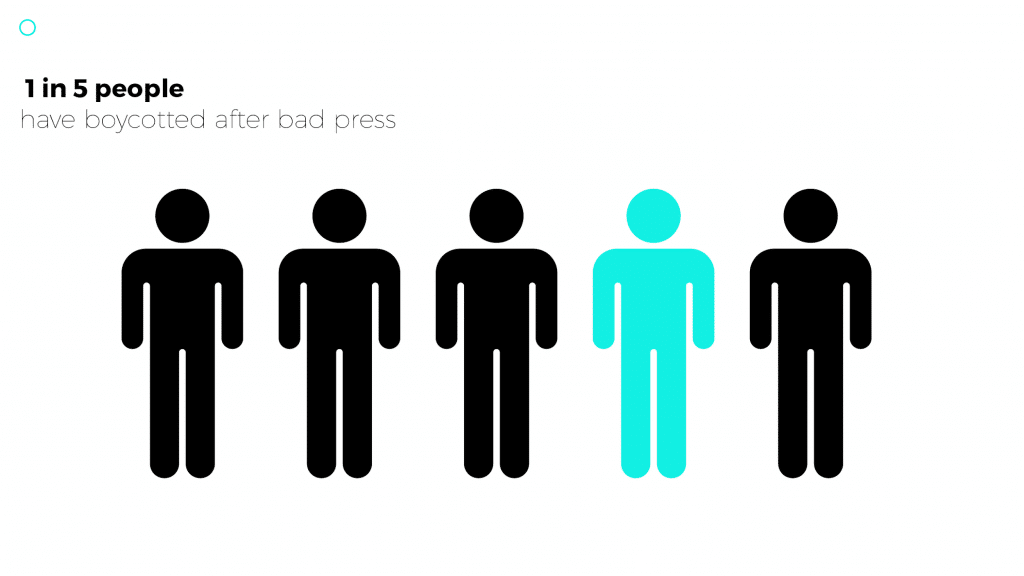
Imagine you’re a scientific journal. You publish hundreds of articles a year, and are well respected. However, you don’t have an SEO strategy in place. News comes out about one of your issues’ editors being implicated in data manipulation, and gets covered on a variety of news sites. As part of this news, your journal is mentioned.
The outcome? When potential subscribers or submissions search for your journal, the top three results are about this editor and the negative things they did. This can tank your reputation, even if you didn’t know about the issue and cut ties as soon as you did.
However, let’s replay the scenario with a solid enterprise SEO strategy in place. When the news comes out, you create an optimized, high quality piece of content addressing the claims and showing your response. You do a content refresh to reduce the amount of mentions of the editor in question, and to promote other topics. Importantly, you continue putting out great, keyword researched content.
The outcome? For a short period of time, the news is the top result – but soon, it returns to normal with your website and positive content being the top responses.
The ability to steer through negativity – whether warranted or unfair – is a huge benefit that many people may not realise.
It’s also possible to turn a poor reputation into a positive one. If it’s not just been one case of bad press, but a consistent problem, it may be more work. Let’s say you’ve just bought out a business, one that had a lot of negative reviews and staff complaints. Even as you start to create positive changes, that reputation will follow you.
Implementing an SEO strategy can allow you to highlight positives – for instance, by creating backlinks through posts about the change in management. It’s a great tactic to improve (and subsequently maintain) a positive brand image.
4. Optimize paid advertising
People often view paid advertising as distinct from SEO – in fact, some may even describe it as an alternative to it. However, the truth is somewhat different. They work together very well, with a strong SEO strategy helping to optimize paid adverts.
How? Two words: keyword research.
All that keyword research that is undertaken while implementing an enterprise strategy can also be applied to advertising. This allows you to target your paid ads more effectively, reducing their overall costs. Additionally, these ads are likely to be more effective when you rank higher on SERPs.
Think about it. If you see an advert for something interesting on TV, and then search for it online, you might be suspicious when it doesn’t show up on the first page or two of results. But if you search it and it’s up there in the top three, it instantly seems more trustworthy.
Paid advertising and SEO strategies complement each other. PPC adverts can boost your traffic as you establish your content for certain keywords, and the insights gained from this can then optimize your advertising. Treating the two as related, rather than distinct, methods, will pay off.
5 – Avoid dramatic changes with search engine updates
Back in 2011, Google released the Panda update. This changed the face of SEO, making keyword stuffing not only irrelevant, but actively harmful, to page rankings. Subsequent updates like RankBrain in 2015 and BERT in 2019 have made waves, but none quite as much.

This dramatic change to SEO methods led to websites scrambling to update their content to avoid being penalized, and having to learn entirely new methods. Luckily, enterprise SEO strategies are robust enough to handle anything the algorithm can throw at them.
Rather than relying on a single tactic, enterprise strategies use a variety of techniques. This holistic approach helps avoid any dramatic changes that might be brought on by search engine updates. They plan for long term, ongoing improvements, rather than trying to quickly ‘hack the system’. This means writing useful, high quality content, not trying to cheat with keywords in the same color as the background.
The robust nature of enterprise SEO is a key benefit for major companies, as it provides a stable and a consistent result.
Enterprise SEO Strategies
As we’ve discussed, SEO is no longer as simple as adding in some keywords here and there. Enterprise SEO involves a lot of different methods, and we’ll take a look at some of them here.
Auditing
The first step in any plan should be an audit of existing content. You wouldn’t try to improve a product without feedback on its current form, and you shouldn’t try and improve a website without checking how it’s doing.
These audits should look at a variety of factors, including:
- Whether the site meets technical requirements
- Whether the site is mobile optimized
- The amount and quality of onsite content
- The amount and quality of offsite content
- How many backlinks you have, and how well they’re doing
- Which keywords are being targeted, and how successful that targeting is
- Looking for duplicate content
Generally speaking, an audit is an SEO health check. It can be done alongside competitor and market analysis, audience research, and broader content reviews.
One advantage of having an enterprise SEO company undertake an audit for you is that they’re a neutral third party. They’ll see the website for how it currently is, rather than through a lens of past updates and potential bias. Additionally, they’ll have experience in these audits, which is definitely better than hoping your content marketing team can suddenly learn lots of new skills.
Check for penalties
You may have suspicions that you’ve been penalized by a search engine (usually, Google). If you’ve had a sudden drop in engagement or reports that people can’t find you, it’s time to check if there’s problems.
This isn’t often offered as a standard part of an audit, but it’s a worthwhile add on if you have concerns. Working out whether you have been penalized, identifying the particular issue, and removing it, are vital if you want your strategy to succeed.
Keyword research
This is a major part of any SEO strategy, and is even more important at enterprise level. There are so many potential keywords out there, and with Google’s natural language processing, context is as important as words.
LSI (latent semantic indexing) is used by many search engines to look at related terms other people use, and provide relevant search results. For instance, if you search for ‘exercise mat’, you’ll also get results for ‘yoga mat’, as LSI has realised the two are related.

Comprehensive keyword research should factor these aspects in, looking for related keywords as well as those that are commonly searched. Let’s take a look at some of the types of keywords you’ll find.
Branded keywords
These are the most obvious and easiest to optimize for. Unfortunately, they also have a limited reach – they come from people who already know your brand name. Some example brand keywords are:
- Nike sweatshirts
- Photoshop tools
- Sephora brushes
While it’s worth optimizing for these keywords on your site – you don’t want to be the fifth result on a search about your brand! – it’s often beneficial to look to off site SEO. Ideally, other first page results should still link back to your site.
For instance, let’s say I search ‘Sephora brushes’. Ideally,the first result should be the product page on Sephora’s website. Further down there may be reviews or lists including this product, and for optimized SEO, these external pages should link back to the domain.
Non-branded keywords
These keywords, unsurprisingly, don’t include brand names. Instead, they’re more generic – think ‘shoes’, ‘software’, or ‘chocolate’. These shorter terms are referred to as head terms, and are often incredibly competitive.
We can, however, expand into long-tail keywords – think ‘best shoe brands for children’, ‘free graphic design software for mac’, or ‘gluten free vegan chocolate’.
These non-branded, long-tail keywords are gold dust to an SEO team. Less companies will have optimized for them, and you can have a big impact by targeting them.
Navigational keywords
This category is even more narrow than branded keywords. Whilst someone searching for a branded keyword could be looking for your page, they might also be looking for reviews or related content. Someone using a navigational keyword has one intent: to find the page they’ve looked for. Some common navigational keywords include:
- Gmail
- Natwest bank log in
Navigational keywords are the most commonly searched type of keyword on Google. Whilst it’s worth noting if any clicks to your page come from these keywords, they don’t really factor into an SEO strategy.
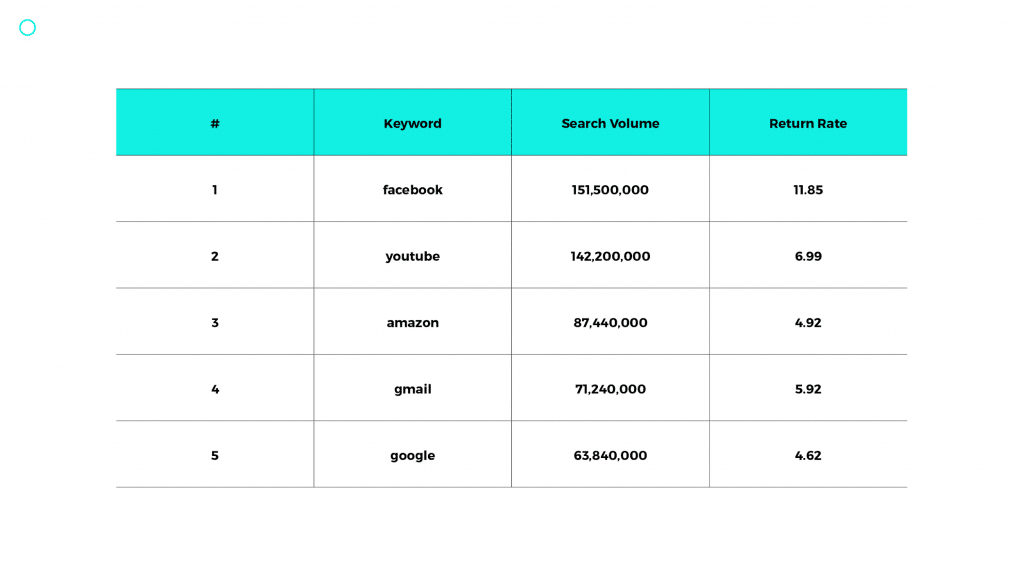
Informational keywords
If non-branded keywords are gold dust, informational keywords are the diamonds. Finding common questions that people search for in your field, and providing them with answers, is a great way to boost your relevance and rankings. These keywords include phrases like:
- House prices in Edinburgh UK
- How to train dog to sit
- Content writing tips
Finding the informational keywords relating to the keywords you want to rank for is a vital step of implementing an enterprise SEO strategy. When we worked on RingCentral’s campaigns, we focused on VoIP. Some informational keywords that were targeted include:
- What is VoIP and how does it work
- Do cell phones use VoIP
- Can I text a VoIP number
- Do you need internet for VoIP
- Is Skype a VoIP
Remember E-A-T? Creating informative content answering these questions can help your site show expertise, authority and trustworthiness. It will also catch the attention of people searching, boosting your rankings.
Transactional keywords
After the interest stage on the sales funnel came the commitment and purchasing stage. This is where transactional keywords come in. These are keywords used by people who already have in mind what they want to buy, though they might not have chosen a brand yet. Some examples include:
- Buy VoIP phone
- VoIP phone for sale
- Buy VoIP number online
Rather than creating informational content for these keywords, you’ll want to target them with transactional content. Landing pages with promotions on, comparison articles, or simply just a detailed product page, are the best things to optimize here. People searching these keywords are ready to make a purchase, you just need to be the one to convert them.
Automation
For small businesses, it’s easy enough to manually analyze information and act on it. However, at the enterprise level, this can get overwhelming. Automation needs to be a major part of any strategy.
To start with, you’ll want to automate much of the auditing and keyword research – we’ll look at some tools that can help with this shortly. Once you’ve successfully identified problem areas and keywords to target, it’s worth setting up a workflow that includes automation from the beginning. While all of these things can be done manually, it’s far more efficient to rely on machines and let your team focus on other tasks.
Aspects of your SEO workflow you can automate include:
- Making your content live
- Trialling content through A/B testing
- Ongoing SEO reports
- Backlink analysis
- Technical site monitoring
It’s worth setting up templates for reports and analysis, and automating this step – that way, your team will be available to act on the data immediately, rather than spending their time finding it.
What are SEO Tools?
SEO tools can be software, in-browser solutions, apps or extensions. There are a lot of them out there, and knowing which to trust can be a challenge. Some reliable, useful tools include:
- Ahrefs: this includes a backlink checker, keyword generator, rank tracker and basic site audit tool.
- Google Analytics: this monitors web traffic, can provide alerts for changes, and lets you identify high and low ranking pages on your site
- SEMrush: a broad tool, it can help with keyword research, link building, content optimization, competitor analysis, and content marketing.
- Moz Pro: similar to Ahrefs and SEMrush, this is a comprehensive tools covering most aspects of the SEO process – it’s well recognised, and used by many SEO professionals.
- DeepCrawl: narrow in scope, but with an incredibly useful application, DeepCrawl is designed for the early stages of optimization, crawling your website and highlighting issues.
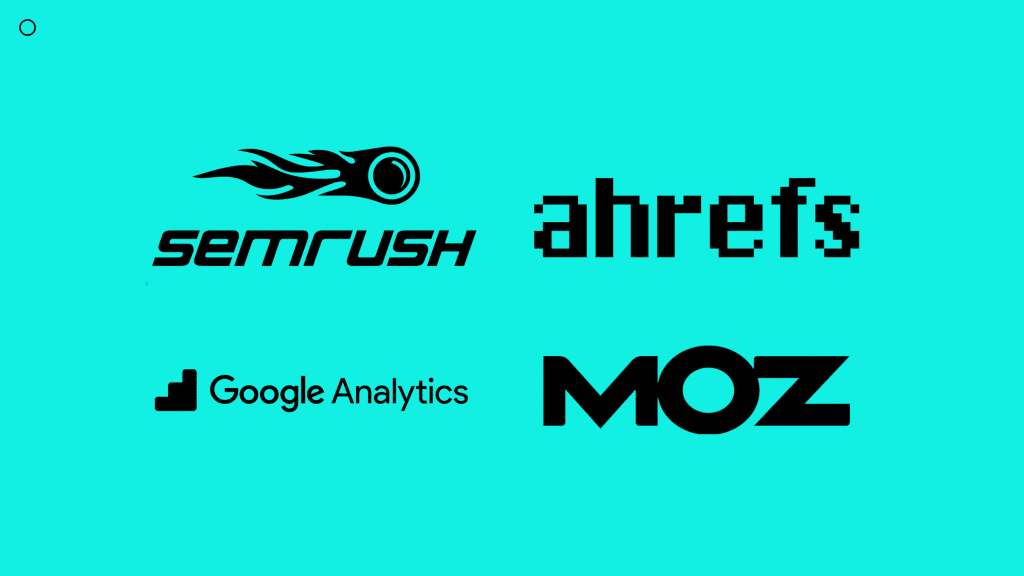
Link building
Whilst targeting keywords and improving your own site is important, you shouldn’t forget link building. Ahrefs have highlighted the importance of this, noting that only 5% of their research sample managed to get organic traffic without backlinks. Even within that 5%, the amount of traffic is incredibly low – averaging around 300 visits a month.
Building backlinks on high authority sites helps you fulfil Google’s E-A-T requirements, positioning you as a trustworthy expert in your field.
There’s a very important phrase to note here: those backlinks must be on high authority sites. Outdated SEO techniques might have you trying to get your links out there, no matter what, but this can lead to worse results and even penalties.
Avoid taking a scattershot approach, spamming links in comments, and submitting guest posts to irrelevant sites (let’s face it, if you’re trying to get a post about AI in finance on a beauty blog, you’re doing it wrong).
Instead, spend time researching and compiling a collection of high quality domains. When considering the RingCentral case study from earlier, it’s worth noting that Accelerate succeeded thanks to collaborations with high authority domains such as BigCommerce and HubSpot.
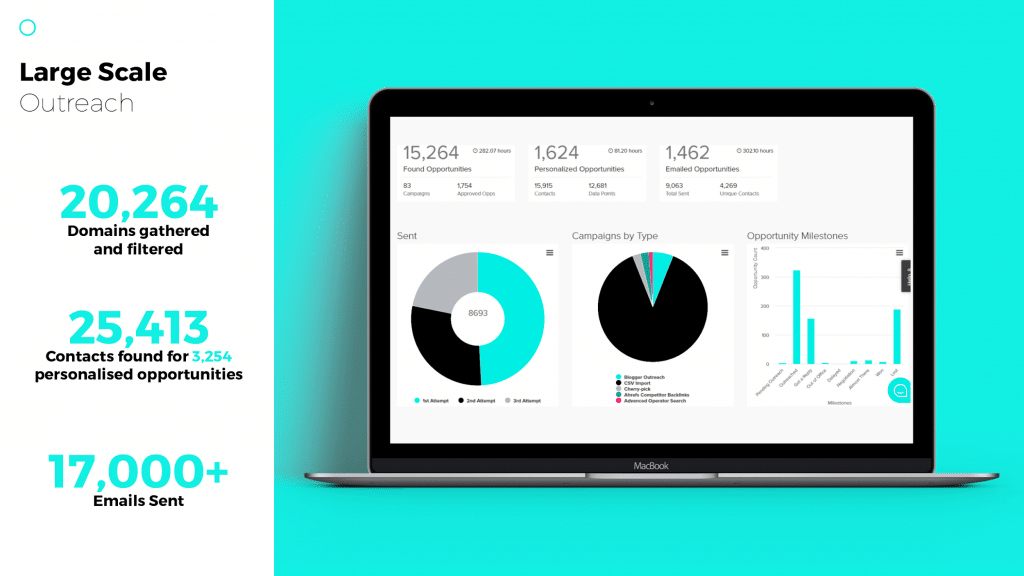
This is a lot of work, and it’s also why hiring an enterprise SEO company is often worthwhile. They’ll be much more familiar with both the process and the websites out there. They’ll have perfected the art of the approach email, understand what pitches work and what don’t, and have a knack for spotting opportunities.
Content Optimization
Back onto your site, it’s time to consider content optimization. Many people think of this as being limited to one area of their site – often the blog – but it needs to be done throughout to have impact. That includes:
- Landing pages
- Product descriptions
- Videos and their transcripts
- Tutorials and FAQs
- Your ‘about us’ page
- Blog posts
Basically, if it’s on your website, it should be optimized and up-to-date. There are three key aspects to manage here – updating existing content, removing duplicate content, and creating new content. Let’s take a look at the best strategies for each.
Update existing content
Creating entirely new content can be a great way to refresh your website, but it’s also a lot of work. If you already have content that works for you, it’s far more effective to simply update it. Depending on how well it’s already performing, this could be as simple as adjusting what keywords you use.
The first thing to do, then, is to assess what’s already in place. Are there some pages that bring in a lot of traffic? You might think this means you can leave them alone, but it’s far better to take advantage of that traffic. Make sure the content is current, add some relevant internal links, and focus on maintaining that popularity.
The next thing to look for is content that makes page two of Google. If you have pages that are ranking relatively highly, but not quite making that first page, they should be a priority. Bumping them up just one or two places can have a huge impact – as noted earlier, results on the second page have a less than 1% click-through rate.
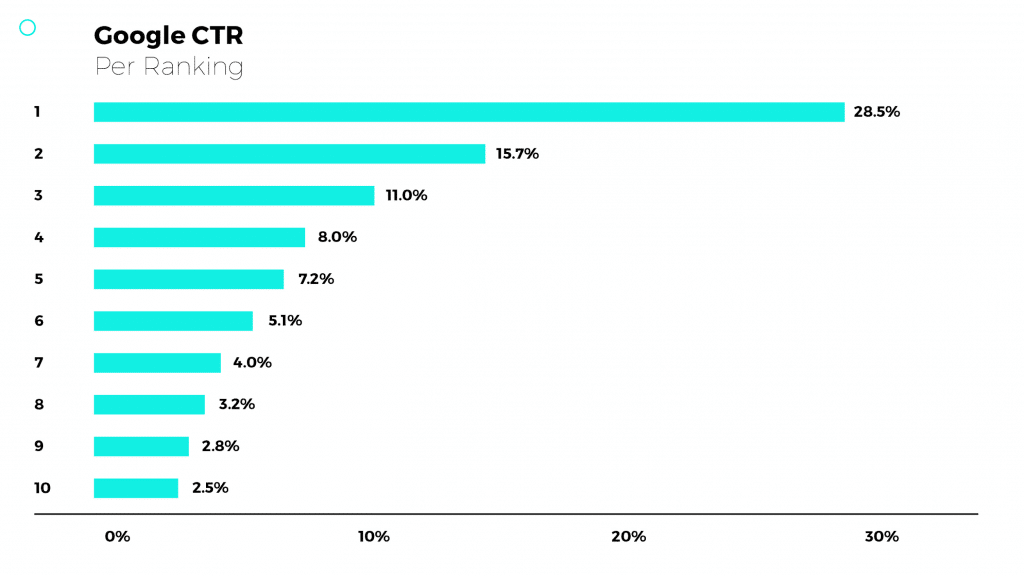
Of course, the higher on the first page, the better – but making that initial jump from page two to page one is a great way to start bringing in traffic as you refine your website further.
Then it’s time to look for your low performing content. Hopefully, the audit stage will have highlighted this, and potentially ascertained the reasons why. Maybe it isn’t targeting the right keywords, or perhaps it isn’t answering questions searchers are asking. Remember what we said about informational content being valuable? It’s only valuable if it talks about things searchers want information on.
In some cases, you might find that your old content simply isn’t working for you. If that’s the case, it’s time to start creating new content. However, it’s always worth seeing if it can be reworked – especially if it’s a page you’ve built links around.
Remove duplicate content
Most search engines do not like duplicate content. You might think ‘wait, but I haven’t copied anything’. Unfortunately, plagiarism isn’t the only way for duplicate content to happen. Having similar content on two blog posts about the same topic is easily done, as is having the same product description as dozens of sites stocking the same product. Sometimes, it’s simply due to restructuring.
Removing duplicate content needs to be done carefully. If you’ve already done some link building, it’s incredibly easy to break links here. 301 redirects are a great way to avoid this. Rather than removing everything, it may be worth simply rewriting or merging things, keeping your pre-existing content but in a different location.
Use keyword research to create new content
Once you’ve reworked your current content, it’s time to create new things. A lot of content on an enterprise site will be written, but that doesn’t mean you should only focus your efforts here. Creating new images, infographics, and videos can help your SEO as much as new blog posts.

The key to this new content marketing plan is keyword research. Understanding what keywords you’re targeting will impact the sort of content you create. Let’s say you’re a large beauty brand launching a new range of foundation. Relying on the head term ‘foundation’ is likely to be difficult – not only are there a lot of makeup brands already in the market, but the term foundation has multiple meanings.
However, through keyword research and generation, you may discover some long-tail keywords that are easier to rank for, for instance:
- How to find right foundation shade
- Foundation match quiz
- Types of foundation brushes
There’s a huge variety in the types of content you could create to rank for these. For the first one, a detailed blog post with lots of images and examples, would work – especially if you add internal links to your own products. The second gives you a suggestion in the term itself, as the searcher is looking for an interactive quiz. As for the third, you could write another blog post, or you could create an explanation video with demonstrations of each brush time.
Using long-tail keywords to plan and create your content is a core part of a strong enterprise SEO strategy.
Creating templates
Unlike smaller businesses, enterprise companies and websites will have a lot of pages and categories on their site. A firm like KPMG International, for example, has over 175,000 pages (found through SiteChecker). Trying to manually update everything while adding new content would be impossible – and this is where templates are useful.
One particular challenge for updating or adding content is having to ask your web developers to do it every time. By asking them to create a template your content team can use, you free up their time and enable updates to be pushed live more quickly.
Training
All of these above strategies will go to waste without sufficient training. One benefit of bringing in a third party is that they can provide training to your staff, enabling them to continue the work after the contract ends.
Any employee involved in the process needs to have a familiarity with relevant SEO practices. This means your backend and frontend developers need to understand the technical requirements, teams in other countries need to understand their local market, and your content team needs to know how to target keywords.
Cross team collaboration
Since anyone involved with the enterprise site needs to have an understanding of their role in the SEO process, cross team collaboration is vital. If your content creators aren’t working with your customer experience team, or your developers don’t talk to your sales department, there will be miscommunications.
Ensuring that everyone understands why certain things are necessary increases the likelihood of everything going to plan. It’s important to build an environment where people are happy to ask questions, and speak to other teams. This will lead to a robust, well built strategy that affects everyone’s workflow, rather than it becoming the responsibility of just a few people.
Monitoring and evaluation
Of course, developing an enterprise SEO strategy isn’t a one-off task – it’s an ongoing process. In order to gain the benefits of a truly optimized website you need to constantly monitor and evaluate what works, and what doesn’t.
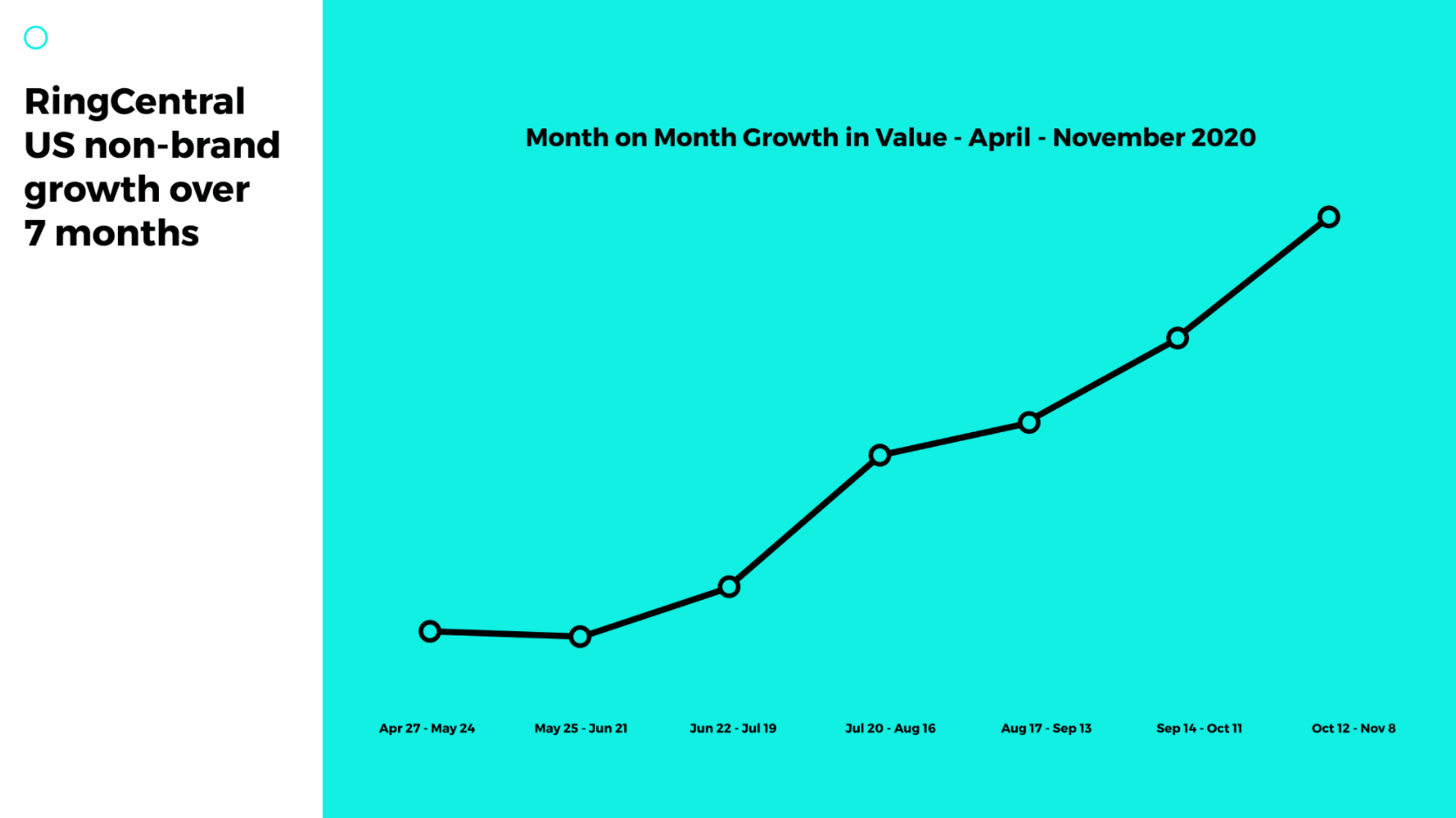
It’s not enough to write a piece of content, optimize it for a particular long-tail keyword, and upload it. You need to monitor the traffic it brings it, check how it’s ranking, and make sure what you did worked. Gathering this data is the best way to see what works and what doesn’t.
As well as keeping an eye on traffic and SERP rankings, you’ll also want to monitor conversions. Ideally, you should see them increase as your traffic and rankings do – and if they don’t, you know there’s another problem to address.
While monitoring your own website is important, it’s also not the only thing to keep an eye on. Competitor analysis should be an ongoing part of your strategy too. If they’re bringing out new products, you’ll want to know how to compete. Equally, if you spot a gap they’re not filling, that’s a prime opportunity to push out some relevant content and grab some of their audience’s attention.
Beyond monitoring your competitors, you’ll also need to stay on top of industry trends. Understanding what everyone is talking about will allow you to stay relevant – whether that’s through adding your own expertise to the discussion, or offering an alternative. This is particularly important for link building, as any guest posts you submit to other sites are likely to excel if they’re on a trending topic.
Finally, make sure to keep an eye on general SEO and website trends. An enterprise SEO company will usually do this themselves in order to better help their clients, but it’s worth being aware of even if you’re working with an external team. Being aware of Google’s updates allows you to make sure your website will remain relevant after their changes.
What Accelerate Can Do For You
Creating an enterprise level SEO strategy can be a daunting task. Accelerate Agency can bring their wealth of experience to your brand, and get you up to speed in no time.
No two businesses are the same – and neither should be their strategies. Accelerate will bring a custom approach, based on your needs. Whether that’s a full audit followed by help removing Google penalties, or a complete overhaul using their team of content writers, we’ll find a solution that works for you.
Want to find out more? Click here to contact us.
An SEO Glossary
Optimizing your business’ SEO can seem challenging, especially if you don’t understand a lot of the technical terminology thrown around. Here are some key words and phrases that you’ll encounter frequently.
- SEO: search engine optimization
- SERP: search engine result pages
- Head terms: popular, short keywords, for instance, ‘online learning’
- Long-tail keywords: longer, less popular keywords, for instance, ‘online learning classes in history’
- PPC: pay-per-click advertising
- Blackhat: unethical SEO practices that go against search engine guidelines
- Whitehat: SEO practices that work with search engine guidelines
- Crawling: how a search engine finds your pages
- Backlinks: links from external websites to relevant content on your website
- Authority: the relevance and quality of a website, which helps determine search engine rankings

